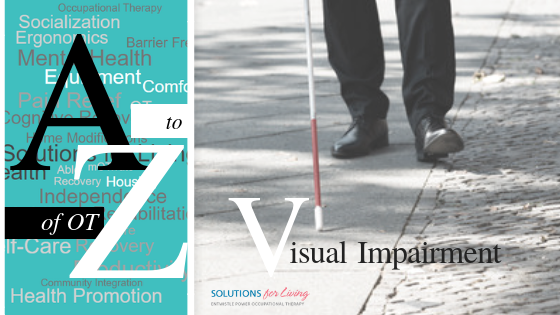As an occupational therapist, I have worked with people who have low vision and can say that no two people will experience this the same. First of all, vision loss and legal blindness do not mean total blindness, so the first step is always trying to understand what people can see and the ways their vision continues to work (or not) for them. This, of course, involves multiple professionals, but as occupational therapy is about “function” we need to look at how their vision works and doesn’t work, in the environments in which they live and access. Learn about the strategies Occupational Therapists use to help those with visual impairment achieve optimal function in their daily lives in our post, OT Can Help with Visual Impairment.
October is Occupational Therapy Month and to celebrate we will be sharing a new series called the A to Z of OT. In our attempts to further educate the public about what Occupational Therapists do we will be highlighting twenty-six of the awesome ways OTs provide Solutions for Living.
We encourage you to follow along and to add to the discussion by highlighting other awesome things OTs help with for each corresponding letter!

